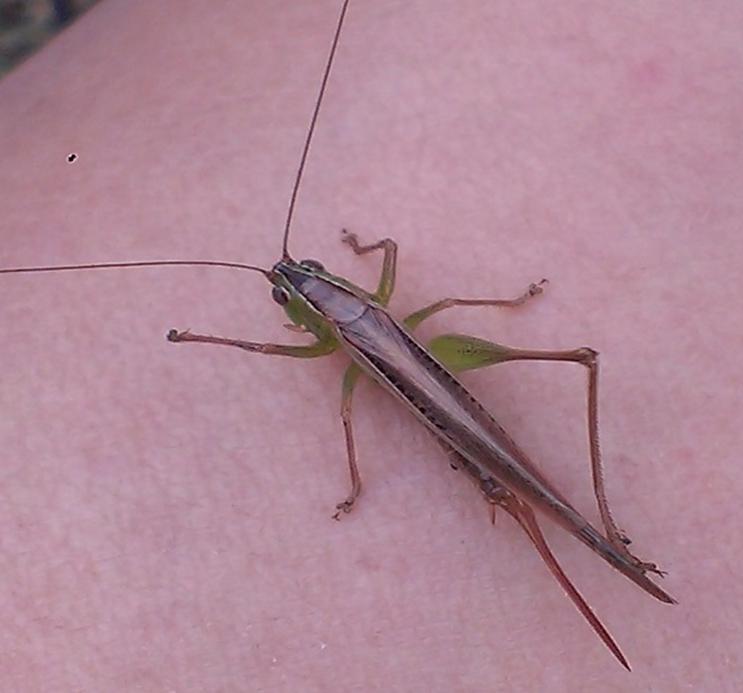Phuntsho Wangmo
The current project aims to study and document the Diversity and Abundance of Grasshoppers (Orthoptera) in different land use system; cultivated paddy field and Natural forest ecosystem. The project will involve people’s participation in understanding the ecological roles and to get accustom with grasshoppers which appears in all the surrounding landscape for better coexistence.

Grasshopper is a medium to large sized insect, which dominates native herbivores in grassland ecosystem worldwide in all continents except Antarctica (Branson, 2011). The Kingdom of Bhutan stand top ten percent of rich biodiversity, a unique asset unmatched elsewhere in the world with highest species diversity, but small creature of grasshoppers are neglected, threatening very conservation priority. Grasshoppers are dominant species in terrestrial landscapes having integral ecological roles and are among the largest and most plentiful insects, yet they are least studied and poorly known for conservation. Grasshoppers belong to family Acridoidea and Pyrgomorphoidea of the order Orthoptera and suborder Caelifera (Otte, 1981). They are best known for their ability to jump incredible heights and distances. There are numerous numbers of grasshopper species in Bhutan, which are considered as economic pest and get killed deliberately hampering conservation goal. Therefore, extinction of Grasshopper species may occur before knowing their presence without any form of study and documentation, which inspired for the current project.
The sampling quadrate size of 200 m x 200 m will be laid and 4 transects line will be stretched joining the edge the quadrate maintaining 40 m distances interval in both land use. The sweeping and handpicking method of Grasshoppers will include both ground level and height within the 2 m above the ground along the 4 transects in each quadrate.
Identification of the species in field will be conducted by catch and release method without having to kill. The only unidentified species will be killed and pinned for further identification and part examination in laboratory. Vegetation assessment will be done in entire quadrate of 200 m x 200 m to determine habitat preferences in different forest types by Grasshopper species and in different rice varieties in paddy field. Sweeping net in morning and evening for three months consecutively, killing and pinning, part examination, vegetation assessment, diversity, evenness index and statistical test will be used for interpretation of the result.
The project will document the diversity and abundance of Grasshoppers in cultivated rice field and in natural forest ecosystem. Understanding the ecological roles and changing the people’s attitude towards conservation of these species will be the primary output from this project. The results will serve as baseline data in the country to formulate the plans and policies of conservation of Grasshopper Fauna and also to monitor the status of Grasshoppers in future.